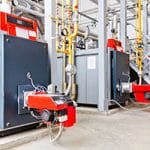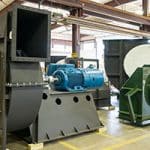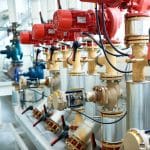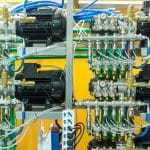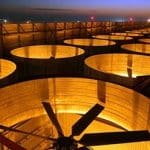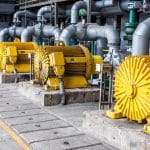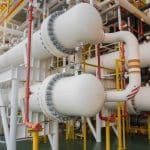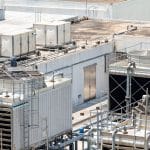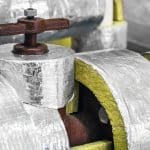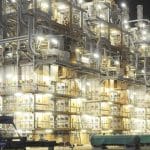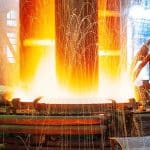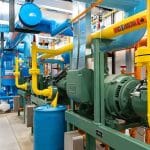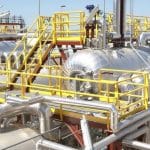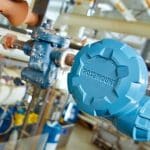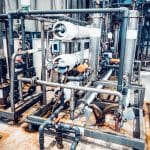The 3 kEs
- Optimizing process fluid preheating is one of the most effective ways to improve the energy efficiency of olefins furnaces.
- Regular inspection and cleaning mitigates against the effects of deposits accumulating on heat exchanger surfaces. Inattentiveness here results in less heat recovered, forcing the furnace to consume more fuel to maintain process conditions.
- The steam-to-hydrocarbon (S/C) ratio is a critical factor in furnace performance, directly influencing cracking selectivity and fuel efficiency. Optimizing this ratio reduces unnecessary steam consumption, lowering energy costs.
The Importance of Process Fluid Preheating
Optimizing process fluid preheating is one of the most effective ways to improve the energy efficiency of olefins furnaces. When feedstock enters the radiant section at a higher temperature, the furnace requires less fuel to reach the necessary cracking conditions. Proper preheating reduces fuel consumption, enhances selectivity, and extends furnace run lengths by minimizing thermal stress on tubes.
Tube Tech explains how restoring process fluid preheat temperatures to design levels through advanced cleaning solutions leads to significant efficiency improvements and lower operating costs. Go to it here: The Critical Role of Process Fluid Preheat Temperature in Olefin Furnace Optimization.
Addressing Fouling in the Convection Section
Fouling in the convection section is a persistent challenge that can significantly hinder heat transfer efficiency. As deposits accumulate on heat exchanger surfaces, less heat is recovered, forcing the furnace to consume more fuel to maintain process conditions. Regular inspection and cleaning can mitigate this issue, ensuring optimal heat transfer.
While manual cleaning is commonly used, advanced robotic cleaning technologies offer a non-disruptive solution, allowing fouling removal without unplanned shutdowns. These methods have been proven to restore efficiency and reduce excess fuel usage, making them a valuable low-cost strategy for maintaining energy performance.
Optimizing Operating Parameters
Small adjustments in operating parameters can yield substantial energy savings. The steam-to-hydrocarbon (S/C) ratio is a critical factor in furnace performance, directly influencing cracking selectivity and fuel efficiency. Optimizing this ratio can reduce unnecessary steam consumption, lowering both energy costs and emissions.
Coil outlet temperature (COT) is another key variable; maintaining it within the optimal range ensures efficient cracking without excessive energy input. A study published in Industrial & Engineering Chemistry Research highlighted the role of operational flexibility in reducing costs and emissions, demonstrating that careful control of these parameters can significantly enhance furnace efficiency. You may want to take a look at that: Exploring the Role of Cracker Flexibility
Implementing Energy Monitoring and Control Systems
Real-time monitoring and control systems enable operators to track energy consumption and detect inefficiencies before they become major issues. By integrating digital energy management tools, plants can make data-driven adjustments to optimize furnace performance.
These systems allow for precise control of fuel flow, air-to-fuel ratios, and overall heat distribution, preventing unnecessary energy losses. The U.S. Department of Energy has emphasized the role of energy monitoring in industrial efficiency, showcasing how digital solutions can lead to measurable reductions in fuel use and emissions.
Exploring Electrification and Emerging Technologies
While traditional optimization strategies focus on improving existing furnace operations, electrification presents a forward-looking opportunity for drastic efficiency gains. Electrically heated steam crackers have the potential to significantly reduce carbon emissions while improving energy efficiency. Leading petrochemical companies such as BASF, Linde, and SABIC have already begun developing large-scale electrically heated cracking furnaces, targeting a 90% reduction in CO₂ emissions compared to conventional units (Chemical Processing).
In addition to electrification, novel reactor technologies such as the RotoDynamic Reactor (RDR) are being explored to improve efficiency. RDR technology allows for higher operating temperatures with shorter residence times, increasing ethylene yields while reducing coke formation. The lower metal surface temperatures help minimize fouling, lowering operational costs and extending furnace uptime (Coolbrook).
The Big Finish
The energy efficiency of olefins furnaces can be significantly improved through operational strategies that require little to no capital investment. By focusing on process fluid preheating, mitigating fouling in the convection section, optimizing key parameters, and leveraging digital monitoring systems, operators can achieve meaningful reductions in energy consumption and operating costs.




